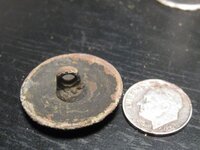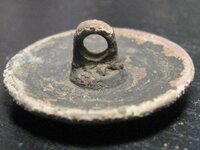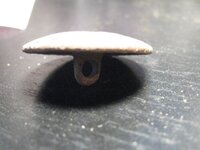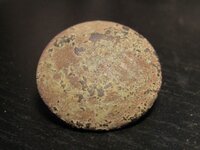Garabaldi
Bronze Member
- Jun 28, 2009
- 2,382
- 91
- Detector(s) used
- Whites M6, Whites Pulse Diver, ETRAC.
Seems like a typical button, but the shaft is not so typical. I have seen this style shaft before. Was it an improved design that helped strengthen the loop, so it would not break off. Typically the loop is attached without the thick reinforcement. Although this button looks over 100 years old, structurally its in great condition. Any ideas on date and is it in fact a civilian button? 












